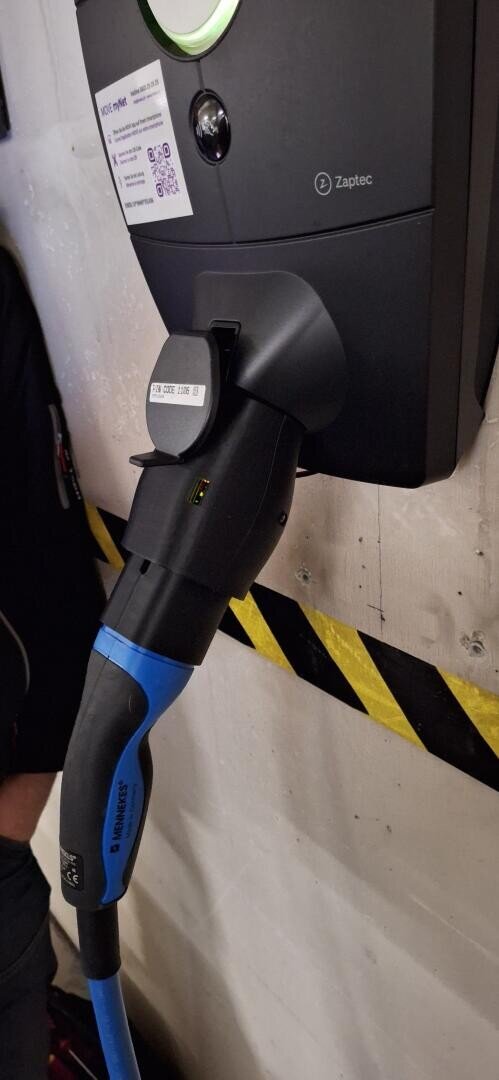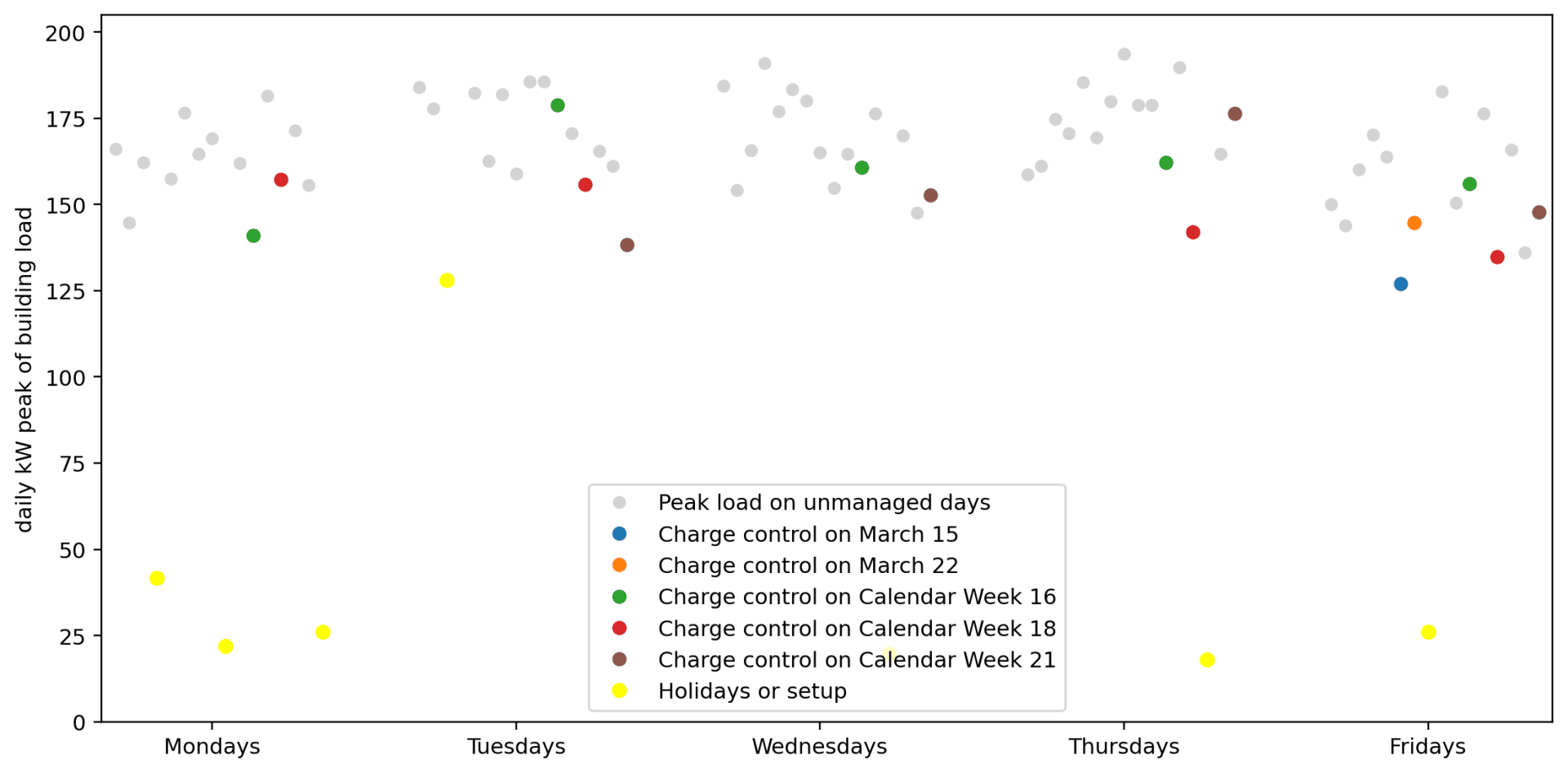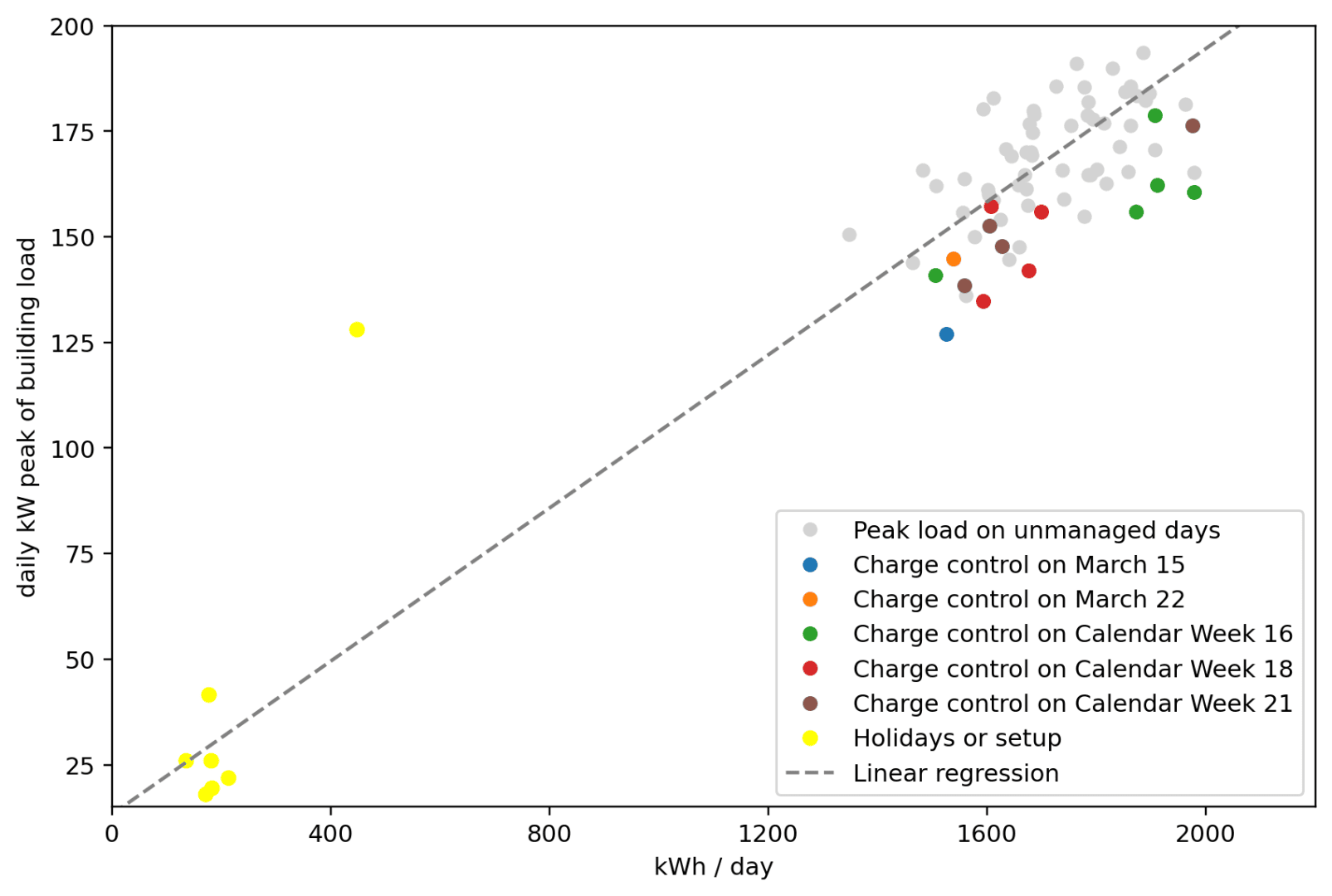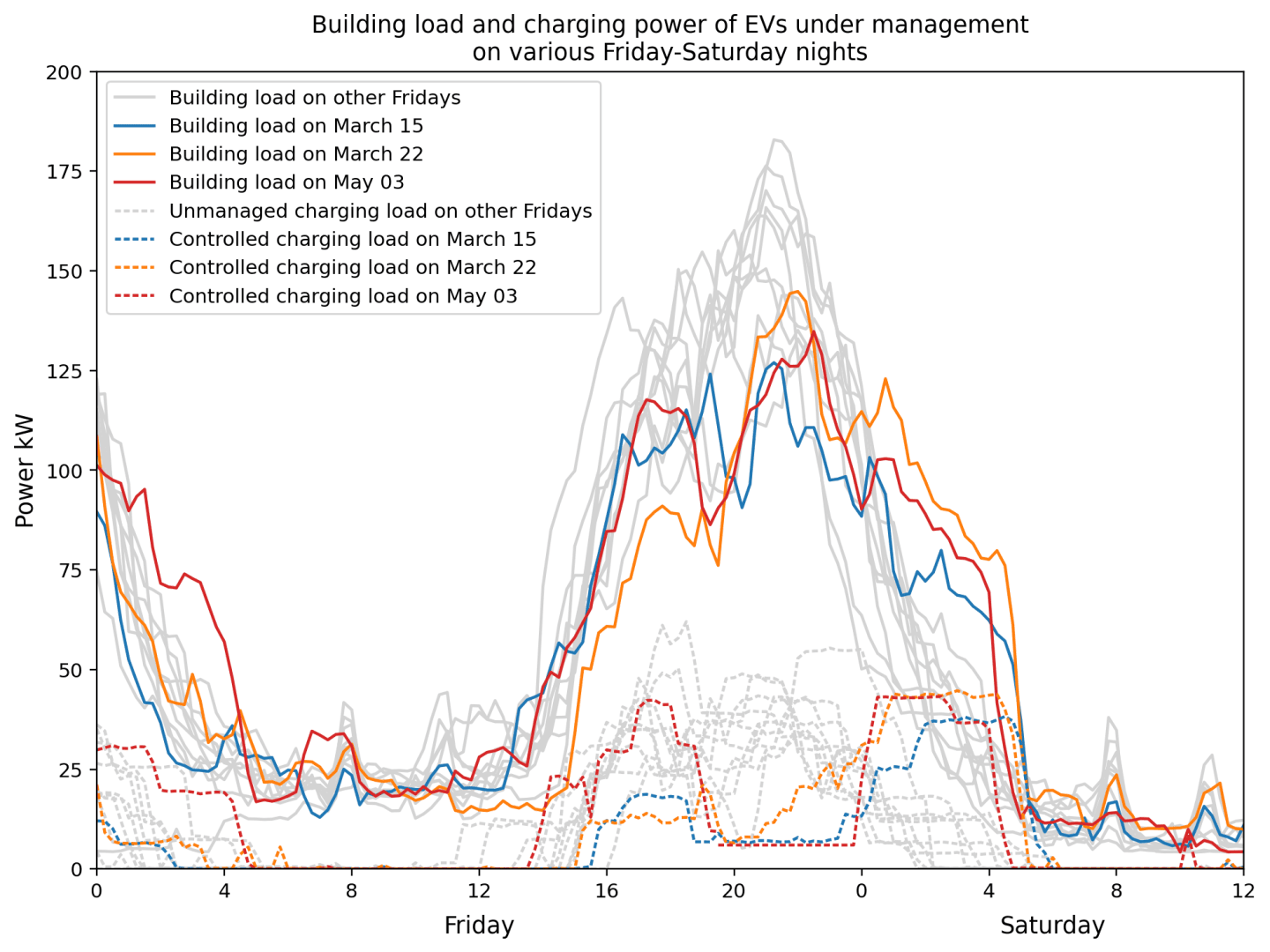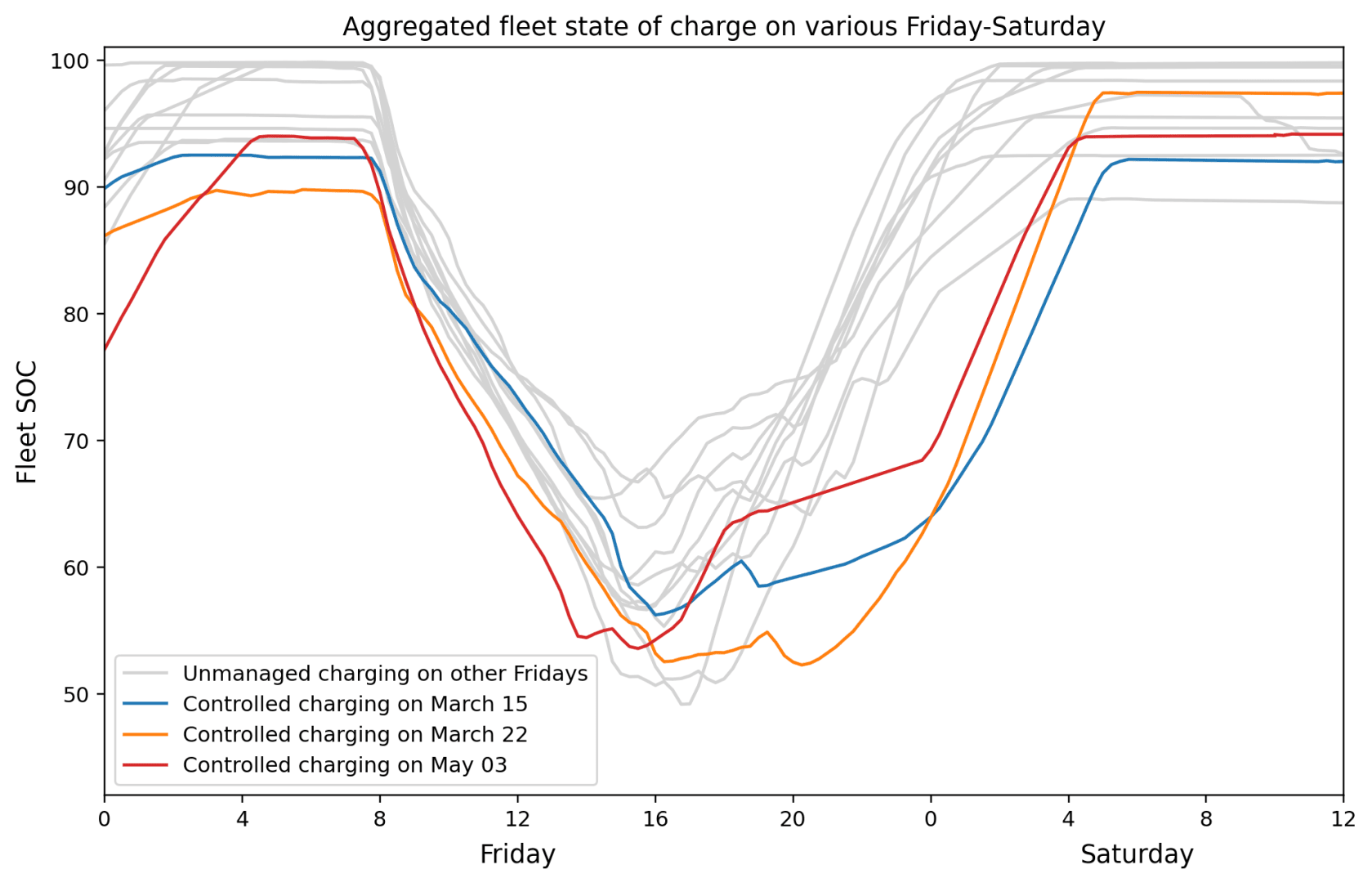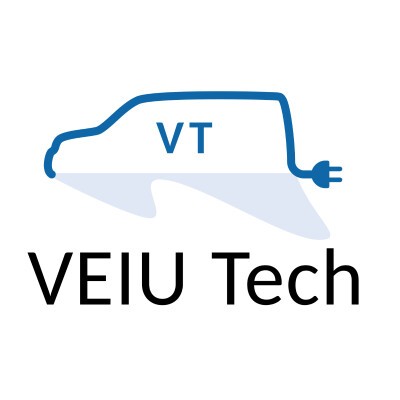Significant peak load reduction achieved in pilot project with EV fleet
EV fleets equipped with VEIU Tech's advanced charge management system can unlock enormous flexibility potential. By optimizing charging schedules, EV fleets can reduce peak loads, cut energy costs, and provide valuable grid services. Discover the first results from a pilot project.
In the past few months VEIU Tech has been working on a pilot project with a couple of EV fleets to prove the effectiveness of our charge management system!
Our independent charge controller
To ensure robust and compatible integration with diverse EV fleets and various charging setups, we developed our independent smart charging controller. This controller can either be installed directly inside wall-boxes or incorporated into an external adaptor that can be plugged between charging cable and EVSE. Either solution allows for a remote (online) control of each individual charging session independently from the EV or EVSE setups.
The pilot project is making use of both versions of our charge control system. The pictures show our external adapter in action at a partner's site.
Significant peak load reduction achieved in pilot project
In the course of the pilot project we are gaining valuable insights into the different flexibility use cases that our advanced charge management system enables. These include:
- Reduction of the peak load the building (“peak shaving”)
- Reduction of the peak load at higher grid levels
- Energy services for the transmission grid
- Minimization of energy cost by following dynamic tariffs
All of this is achieved while meeting every operational requirement from the fleet manager.
The first results from the peak shaving use cases have started to come in and we are happy to share them here with you! These results have been achieved by controlling the charging process of approximately 7-9 EVs (the number of controlled EVs varies daily depending on the operational considerations) within a larger EV fleet.
The two scatter plots illustrate the extent to which we lowered the building’s peak load. Although the reduction varies depending on the day of the week and total energy demand, we could reduce the peak load by an average of 20-30 kW compared to the expected peak for the same amount of energy consumption; all while controlling a charging power of 40-50 kW.
For an average energy contract this translates to bill savings in the order of 200-300 CHF per month, achieved by optimizing the charging process of just 7-9 EVs.
SOC and schedule information are keys to advance charging optimization
The two line plots show how our advanced charge management solution allows this result. These plots compare the SOC and electric load profiles on three exemplary Friday nights where we controlled the charging process to other Fridays where we did not.
Our system did not simply cap the charging load, but actively rescheduled the charging sessions to the optimal time window, while ensuring that all EVs were fully charged by 5 a.m. Optimal rescheduling of the individual charging sessions was only possible thanks to the access to the State of Charge (SOC) of the vehicles. This way the fleet SOC was kept lower until the time came to begin the charging process to start the new day with a full battery.
Reducing the local peak load is just one of the energy services that our system can operate with an EV fleet. The spread in daily SOC profiles concretely displays the charging flexibility space that the EV fleet enjoys and that our system can optimize to offer valuable flexibility services to DSO or other energy stakeholders.

